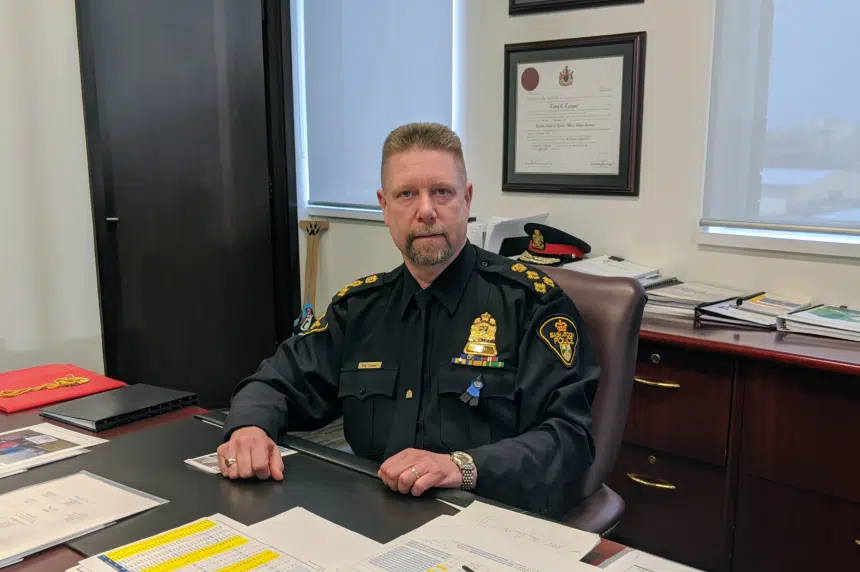Last year was unlike any other year for the Saskatoon Police Service (SPS).
This time last year, Chief Troy Cooper was answering questions about a lip-syncing video that went viral and his adjustments to Saskatoon after his first year as the city’s top cop.
Then, 2019 happened.
A year after reporting a record 13 homicides in 2018, the record was broken once again this year with 16.
“The challenges that we faced primarily began in the summer. We had a rapid escalation of calls for service. We started the year off on par with 2018 … and then towards the end of June we started to see an increase of calls, and it wasn’t so much the number, but the type of calls we were receiving,” Cooper said.
“It’s anomalous. It’s too early to see a trend or pattern if it would become routine or regular,” Cooper said of breaking the city’s homicide record in two consecutive years.
A three per cent increase in calls between late June and October stretched the workforce thin, forcing Cooper to enact an emergency clause to move officers and make more members available.
“The fact that they were violent offences required additional resources and it was a real strain on the service,” he said.
A new year is bringing new recruits and new challenges for police.
A late addition to the city’s first-ever two-year budget confirmed 15 new officers will land in the Bridge City over the next two years.
Eleven of the officers will arrive this year, with 10 being front-line workers. Of those, eight will be stationed in Riversdale and Pleasant Hill as the force prepares for the province’s first-ever supervised consumption site.
“First of all, to address the current call volumes that are there, and second of all, to address any issues that arise as a result of the opening of the supervised consumption site,” Cooper said of the need for the new officers.
The officers will undertake additional training to better deal with drug users, but Cooper said they’re stationed there for more than just monitoring the site, maintaining that the SPS would have requested more officers even if AIDS Saskatoon’s supervised consumption site wasn’t opening.
“It’s bigger than Pleasant Hill, it’s bigger than the site. It’s part of a broader response to the addictions crisis that we’re in here,” Cooper said.
With addiction and deepening mental health issues cited as a couple possible reason for the uptick in crime, redistributing services in Saskatoon’s inner city and a close relationship with the consumption site are two ways Cooper will attempt to reduce harm and better prepare for a possible violent summer.
“I think if we’re going to, as a community, respond properly, we have to have enforcement, but we also have to have treatment, harm reduction and prevention. It has to have all those components or we’re not going to be successful in addressing the drug crisis,” Cooper said.
Cooper doesn’t think the issue is exclusive to Saskatoon and his eventual goal is to map out a provincial drug strategy with local and provincial partners.
Last fall also marked the first year of cannabis legalization in the country, something that had less impact than much of the public might have believed.
“We sort of thought about it as a light-switch moment,” Cooper said. “But that really isn’t what happened in Canada, and certainly wasn’t what happened in Saskatoon. We had a really slow roll out.”
Police saw fewer-than-expected impaired driving offences in relation to cannabis, and will soon get a new roadside mobile testing vehicle as edibles are rolled out in Year 2 of legalization.











